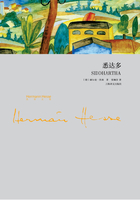Near the coast I observed many sea-shells on the lower plains.At Freyrina (twelve miles up the valley), there are six terraces beside the bottom-surface of the valley: the two lower ones are here only from two hundred to three hundred yards in width, but higher up the valley they expand into plains; the third terrace is generally narrow; the fourth I saw only in one place, but there it was distinct for the length of a mile; the fifth is very broad; the sixth is the summit-plain, which expands inland into a great basin.Not having a barometer with me, I did not ascertain the height of these plains, but they appeared considerably higher than those at Coquimbo.Their width varies much, sometimes being very broad, and sometimes contracting into mere fringes of separate flat-topped projections, and then quite disappearing: at the one spot, where the fourth terrace was visible, the whole six terraces were cut off for a short space by one single bold escarpment.Near Ballenar (thirty-seven miles from the mouth of the river), the valley between the summit-edges of the highest escarpments is several miles in width, and the five terraces on both sides are broadly developed: the highest cannot be less than six hundred feet above the bed of the river, which itself must, I conceive, be some hundred feet above the sea.
A north and south section across the valley in this part is represented in Figure 12.
(FIGURE 12.NORTH AND SOUTH SECTION ACROSS THE VALLEY OF GUASCO, AND OF APLAIN NORTH OF IT.
>From left (north, high) to right (south, high) through plains B and A and the River of Guasco at the Town of Ballenar.)On the northern side of the valley the summit-plain of gravel, A, has two escarpments, one facing the valley, and the other a great basin-like plain, B, which stretches for several leagues northward.This narrow plain, A, with the double escarpment, evidently once formed a spit or promontory of gravel, projecting into and dividing two great bays, and subsequently was worn on both sides into steep cliffs.Whether the several escarpments in this valley were formed during the same stationary periods with those of Coquimbo, I will not pretend to conjecture; but if so the intervening and subsequent elevatory movements must have been here much more energetic, for these plains certainly stand at a much higher level than do those of Coquimbo.
COPIAPO.
>From Guasco to Copiapo, I followed the road near the foot of the Cordillera, and therefore saw no upraised remains.At the mouth, however, of the valley of Copiapo there is a plain, estimated by Meyen ("Reise um die Erde" th.1 s.372 et seq.) between fifty and seventy feet in height, of which the upper part consists chiefly of gravel, abounding with recent shells, chiefly of the Concholepas, Venus Dombeyi, and Calyptraea trochiformis.A little inland, on a plain estimated by myself at nearly three hundred feet, the upper stratum was formed of broken shells and sand cemented by white calcareous matter, and abounding with embedded recent shells, of which the Mulinia Byronensis and Pecten purpuratus were the most numerous.The lower plain stretches for some miles southward, and for an unknown distance northward, but not far up the valley; its seaward face, according to Meyen, is worn into caves above the level of the present beach.The valley of Copiapo is much less steeply inclined and less direct in its course than any other valley which I saw in Chile; and its bottom does not generally consist of gravel: there are no step-formed terraces in it, except at one spot near the mouth of the great lateral valley of the Despoblado where there are only two, one above the other: lower down the valley, in one place I observed that the solid rock had been cut into the shape of a beach, and was smoothed over with shingle.
Northward of Copiapo, in latitude 26 degrees S., the old voyager Wafer found immense numbers of sea-shells some miles from the coast.(Burnett's "Collection of Voyages" volume 4 page 193.) At Cobija (latitude 22 degrees 34') M.d'Orbigny observed beds of gravel and broken shells, containing ten species of recent shells; he also found, on projecting points of porphyry, at a height of 300 feet, shells of Concholepas, Chiton, Calyptraea, Fissurella, and Patella, still attached to the spots on which they had lived.M.d'Orbigny argues from this fact, that the elevation must have been great and sudden ("Voyage, Part Geolog." page 94.M.d'Orbigny (page 98), in summing up, says: "S'il est certain (as he believes) que tous les terrains en pente, compris entre la mer et les montagnes sont l'ancien rivage de la mer, on doit supposer, pour l'ensemble, un exhaussement que ce ne serait pas moindre de deux cent metres; il faudrait supposer encore que ce soulevement n'a point ete graduel;...mais qu'il resulterait d'une seule et meme cause fortuite," etc.Now, on this view, when the sea was forming the beach at the foot of the mountains, many shells of Concholepas, Chiton, Calyptraea, Fissurella, and Patella (which are known to live close to the beach), were attached to rocks at a depth of 300 feet, and at a depth of 600 feet several of these same shells were accumulating in great numbers in horizontal beds.From what I have myself seen in dredging, I believe this to be improbable in the highest degree, if not impossible; and I think everyone who has read Professor E.Forbes's excellent researches on the subject, will without hesitation agree in this conclusion.): to me it appears far more probable that the movement was gradual, with small starts as during the earthquakes of 1822 and 1835, by which whole beds of shells attached to the rocks were lifted above the subsequent reach of the waves.
M.d'Orbigny also found rolled pebbles extending up the mountain to a height of at least six hundred feet.At Iquique (latitude 20 degrees 12'















